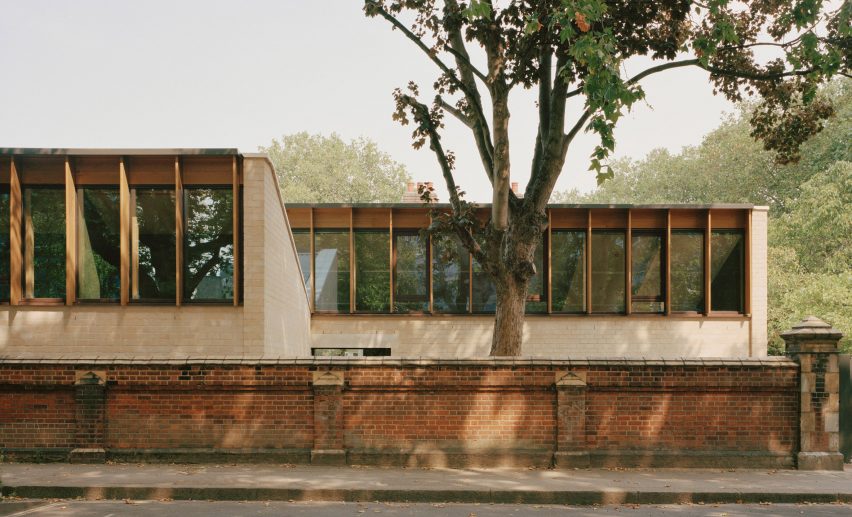
Mae Architects uses circular design principles to build Sands End community centre
Mae Architects has completed a community centre in west London that is designed to be as adaptable and recyclable as possible.
The London-based studio had the circular economy in mind when developing the design for Sands End Arts and Community Centre in Fulham.
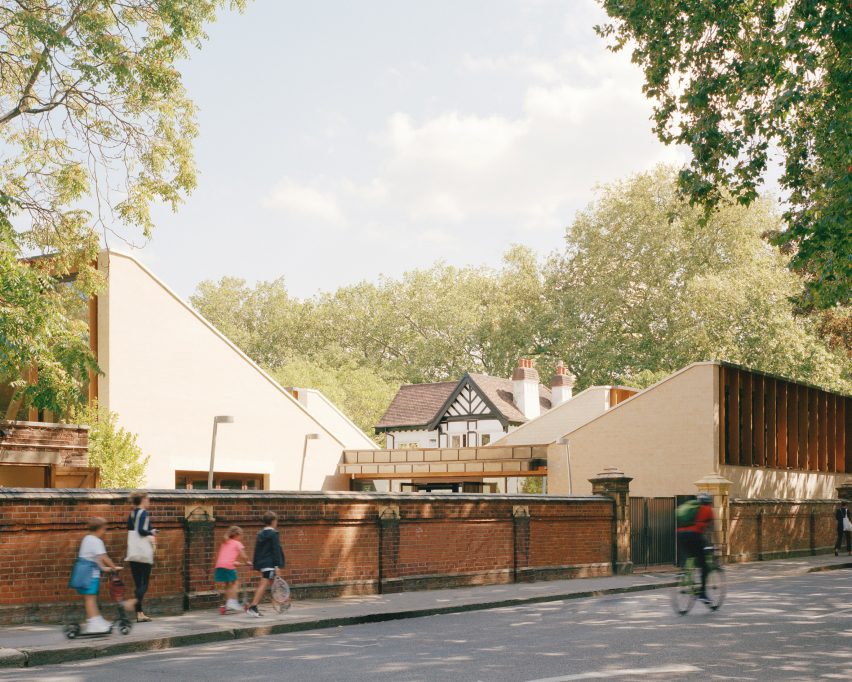
A circular approach to architecture means keeping both buildings and their materials in use as long as possible, and minimising the waste and pollution of construction and demolition.
With this in mind, Sands End has a flexible interior, which not only allows it to accommodate different functions and activities, but also means the building could easily be adapted in the future if necessary.
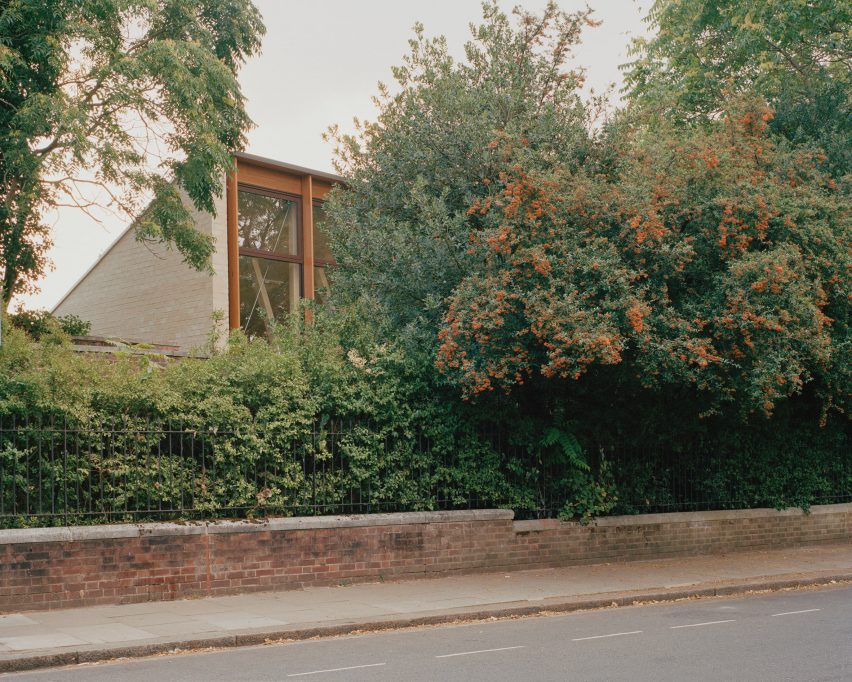
The structure is built from materials with low embodied energy, including timber and a specialist brick made out of construction waste. Recyclable fixings were also chosen where possible; for instance, bolts were favoured over glue.
"We wanted the construction to provide a flexible shell to be adapted and re-used in the future," explained Michael Dillon, an associate at Mae Architects.
"It was imperative to use materials that seemed best suited to simple construction," he said.
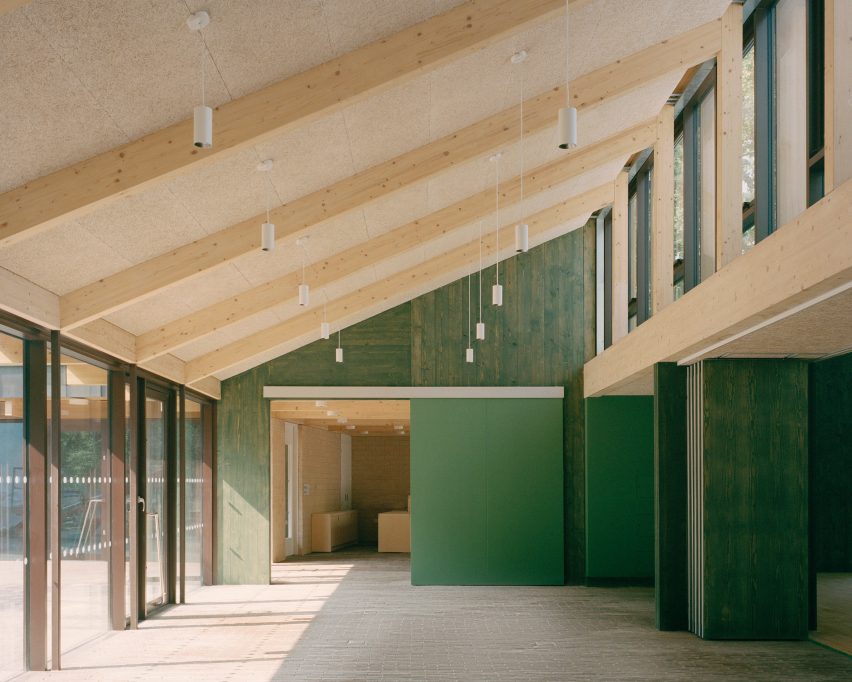
The building's frame is made from a mix of cross-laminated timber (CLT) and glue-laminated timber (glulam), two types of engineered wood that have slightly different benefits.
Mae worked closely with structural engineer Elliot Wood to make this structure as efficient as possible. By leaving the timber exposed, they were able to avoid adding unnecessary layers such as plasterboard.
"We decided at an early stage to remove as many unnecessary linings such as plasterboard from the building," said Dillon.
"The timber proves a hard-wearing and more robust finish for heavy use, which we hope the centre will get in due course. It allows for adaptability, and also offers a warm tactility."
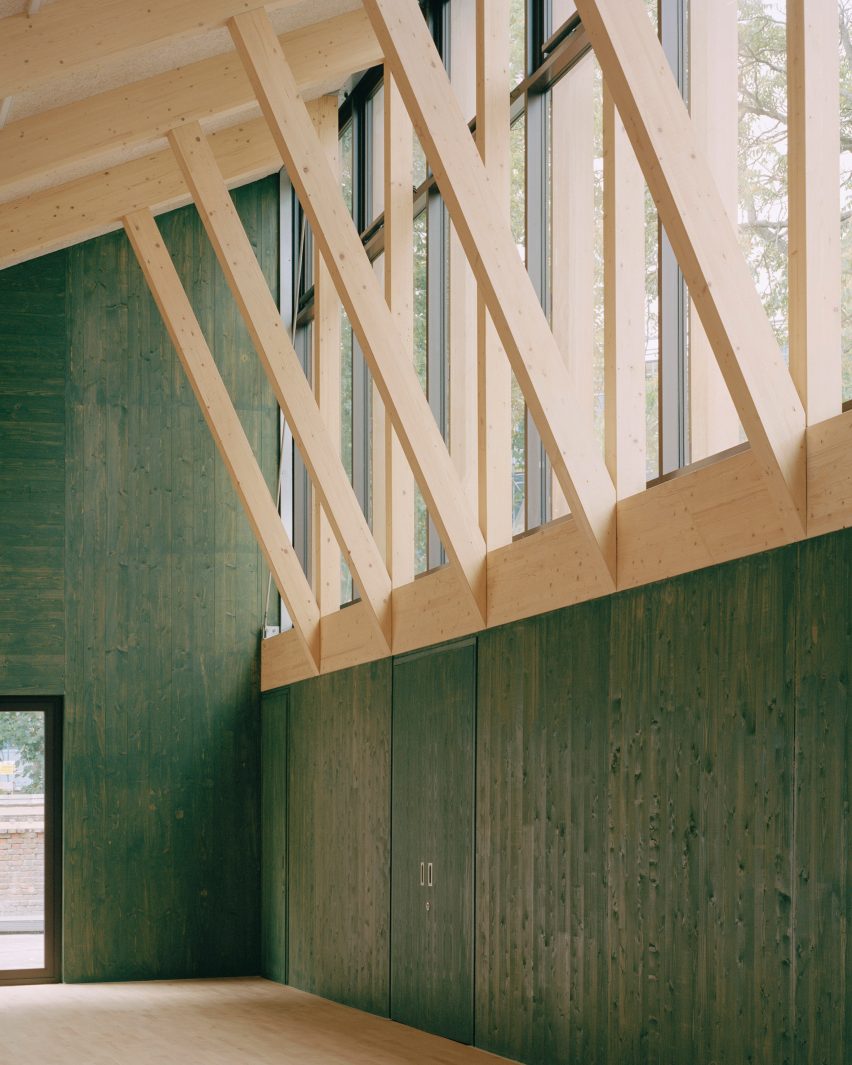
The walls of the building are made from WasteBasedBricks, which are made by supplier StoneCycling using construction waste that might otherwise end up in landfill. Mae worked with the company to develop a variation on the Nougat colour, allowing it to more closely resemble natural stone.
"We worked through different waste mixes to make the brick as sustainable and beautiful as possible," said Dillon.
The product was too expensive to begin with, but the team realised that turning the bricks on their side would make them both cheaper and more efficient.
As a result of using these bricks, more than 35 per cent of the building is made from recycled materials.
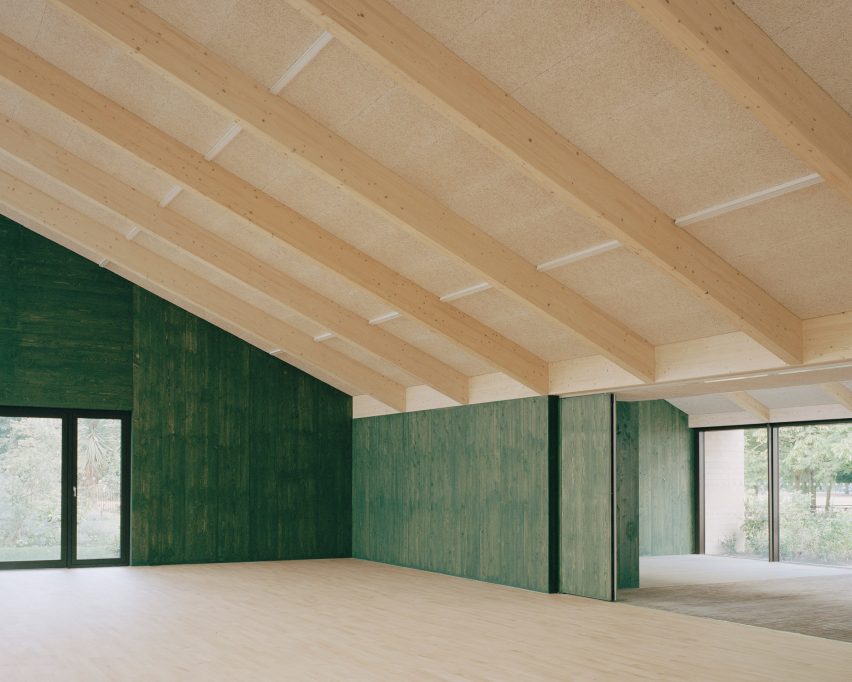
The building is located in the northwest corner of South Park in Fulham, adjacent to a lodge that was built in 1903. As a local landmark for the park, Mae converted this lodge into an arts space.
Sands End adjoins the lodge, but there is a clear distinction between new and old. Together, the various building elements frame a courtyard at the centre of the site.
The new building is all organised over one storey, divided into two blocks. One contains a multipurpose hall and cafe space, while the other provides changing facilities, a common room and a nursery.
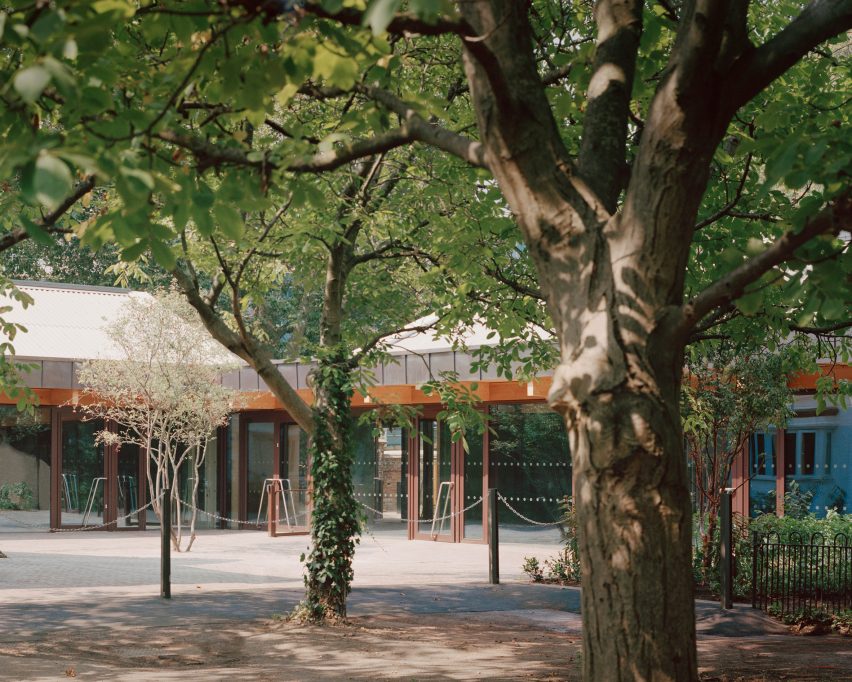
The form of the buildings is based on the triangular roof structures of former glasshouse buildings in South Park and at Fulham Palace, which Mae uncovered from the archives.
The asymmetric roof design creates high-level windows, which not only help to draw in light but also divert views away from the busy road, up towards the tree branches and sky.
"The interior is about connecting with the landscape," added Dillon. "The high-level windows allow wonderful dappled light and a calm enclosure to the interior."
To emphasise this calming character, the wooden walls are stained in a natural shade of green.
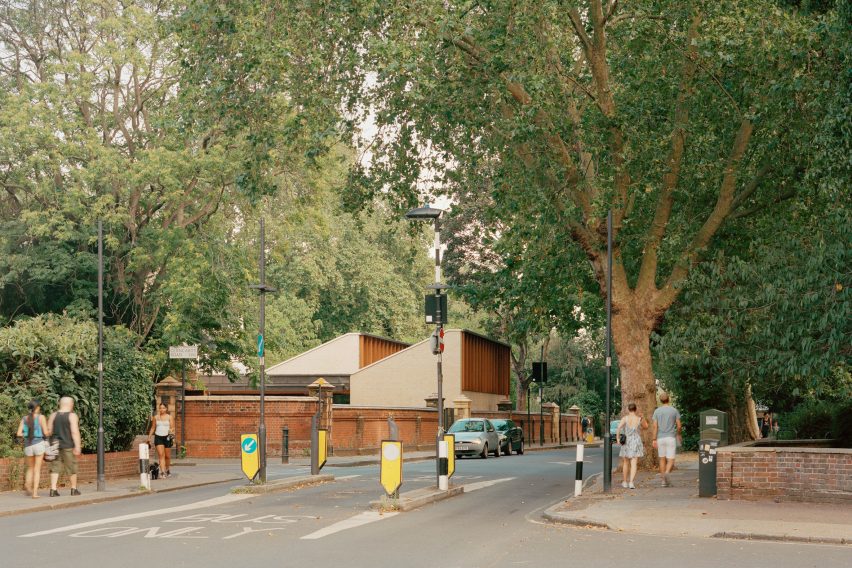
Once a charity organisation has been set up to run the building, Sands End will provide a valuable resource to the surrounding neighbourhood, which includes the borough's largest housing estate, Sulivan Court.
"This beautiful new centre will enhance people's wellbeing across Sands End and south Fulham," said Andrew Jones, who is the Hammersmith and Fulham cabinet member for the economy and the arts.
"It has been set up to ensure that it is truly for people of all backgrounds, and that residents are in the driving seat."
Photography is by Rory Gardiner.
Project credits:
Architect: Mae
Client: London Borough of Hammersmith and Fulham Council
Structural/civil engineer: Elliot Wood
QS: Bailie Knowles
Landscape architect: J & L Gibbons
M&E: Max Fordham
CDM: PFB Ltd
Acoustics consultant: Mach Acoustics
Planning consultant: CMA Planning Consultants
Project manager: IKON